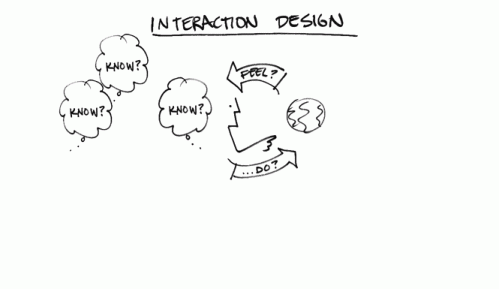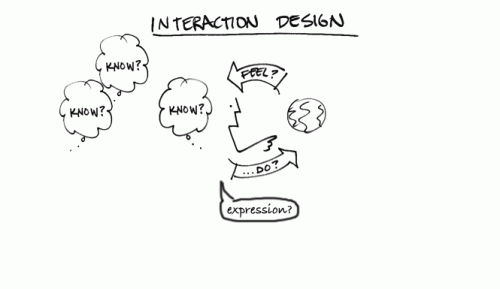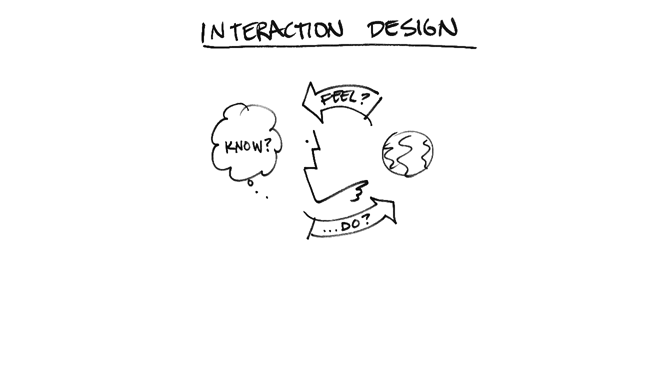A common reference for defining Interaction Design are Bill Verplank’s drawings, one of the creators of the noun.
Bill defines Interaction Design as a question threefolded:
- How do you do? What sort of ways do you affect the world: poke it, manipulate it, sit on it?
- How do you feel? What do you sense of the world and what are the sensory qualities that shape media?
- How do you know? What are the ways that you learn and plan (or perhapse, how we want you to think)?
Good enough for Interaction Design as it is currently practiced mainstream, an individualistic approach for humanizing technology. I don’t want to throw away the merit from this definiton, but I have to say that it doesn’t account for what Interaction Design could be in a broader sense.
In the past, it helped a lot of young interaction designers (especially from Ivrea) to develop the sensorium qualities of technologies, but if we want to develop Interaction Design as a strategic field in our society, we have to go further than this definition.
First, let’s come back to the definition of the word “interaction”.
Physics says that interaction is an encounter of two elements that transform each other mutually. Verplank’s definition shows that the human feels the world, reflect upon it from what they know and act on the world accordingly. After the interaction, both human and world are not the same.
Ok, but, what have changed in them? At the human side, the knowledge about the world have changed, which is a social endeavour. People think about what they feel in a social fashion, allways relating to it’s cultural values. I know what is knowable from the culture I’m part of. After learning something, people want to share with others what are their feelings and opinions. Then comes expression. What people say is as important as what they know about it. Expression is an action oriented towards the knowledge and the world simultaneously. It´s a link between them since it makes impact on both.
After learning something, people want to share with others what are their feelings and opinions. Then comes expression. What people say is as important as what they know about it. Expression is an action oriented towards the knowledge and the world simultaneously. It´s a link between them since it makes impact on both.
 At the world side, a lot is already hapenning. Thoughts have consequences. The world can become a better place or a poisoned dump depending on human actions. Time scale is an important factor to consider when measuring effects, because long time effects can be dramatically different than short time effects, as in the global warming caused, in part, by refridgerator gases.
At the world side, a lot is already hapenning. Thoughts have consequences. The world can become a better place or a poisoned dump depending on human actions. Time scale is an important factor to consider when measuring effects, because long time effects can be dramatically different than short time effects, as in the global warming caused, in part, by refridgerator gases.
The conclusion is that interactions are not isolated. Many people are interacting with the world at the same time, using similar tools and getting similar effects. It’s a social process that promotes knowledge gathering and sharing, expression, and network effects. This can be considered a broader interaction, a complex interaction between multiple people and technologies connected.
According to the symbolic interactionism, the complexity of human interaction arises from the contradiction between predispositions and motivations. It’s not possible to do what we want to, but there are allways other possibilities. From that we can see that there are no easy dillemas.
Such complexity level can seem unattainable for day-by-day Interaction Design projects, but if we want to get more relevance in society, we have to strive for it. Only after accepting this complexity that Interaction Design can help society in coping with the greatest dillemas of our time: sustainability, democracy and health.

